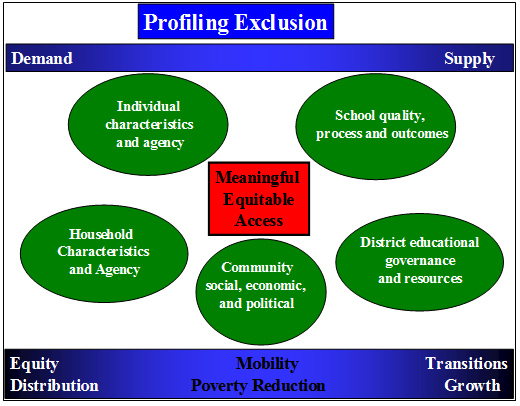Meaningful and Equitable Access
Conceptually, exclusion has a range of causes that lie at different levels of analysis. These can be mapped schematically to include individual and household characteristics, community level attributes including livelihoods and social preferences and practices, school level features and aspects of local and national level educational administration and resource availability. These interact to shape meaningful and equitable access.

Educational access is a problem on both the supply and demand sides of provision. Some Education for All programmes have concentrated on inputs where infrastructure is weak, buildings and classrooms inadequate or unavailable, learning material in short supply, and teacher qualification is low. These inputs are often greatly needed where enrolment growth is strong.
However, access problems also arise from failing demand, especially amongst older children and in communities where the opportunity costs of school attendance are high, and where school quality is low. Where access is very unevenly provided, such that for example the poorest children may have less than a tenth the chance of the richest of completing secondary schooling, then equitable access is compromised.
To be worthwhile and have utility, access must lead to transformations in capability that are linked to the knowledge and skills that can enhance the chances of mobility out of poverty.